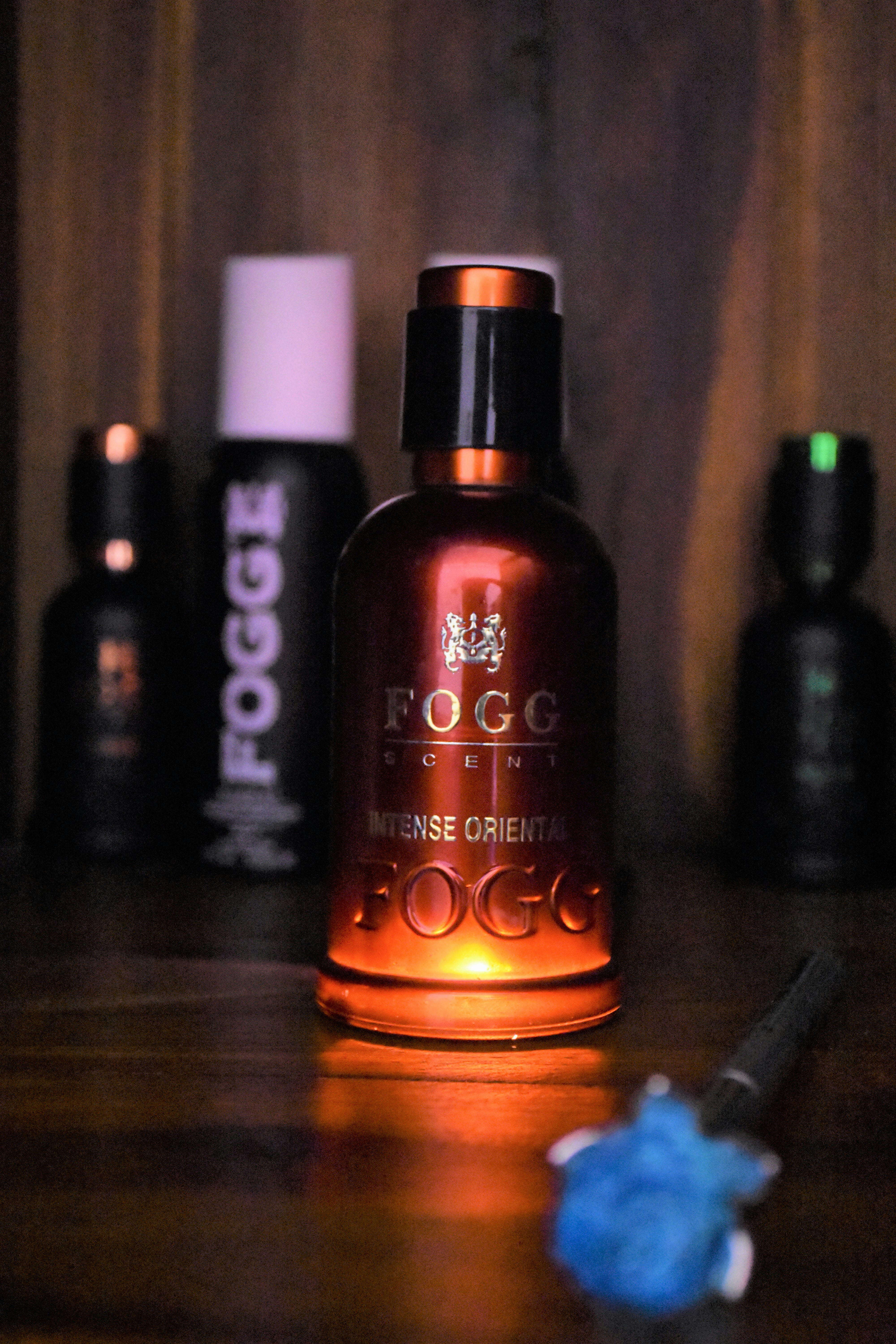
Introduction to Aromachology
Aromachology is an interdisciplinary field that examines the impact of odors on human behavior and emotions. This evolving discipline investigates how various scents can influence mood, enhance cognitive function, and even alter social interactions. At its core, aromachology seeks to understand the psychological and physiological responses elicited by different fragrances, recognizing that olfactory stimuli can provoke memories and feelings associated with specific experiences.

The origins of aromachology can be traced back to ancient civilizations that recognized the powerful effects of scents on human well-being and social practices. While the term itself became popular in the 1980s, the study of scents has long been linked to various cultural rituals, including those involving incense and perfumery. As the field has evolved, research methodologies have become more sophisticated, integrating aspects of psychology, neuroscience, and sensory studies to deepen our comprehension of the olfactory system.
Table 1: Key Differences Between Aromachology and Aromatherapy
| Aspect | Aromachology | Aromatherapy |
|---|---|---|
| Definition | Study of how scents affect human emotions and behavior | Use of essential oils for therapeutic physical and mental health benefits |
| Focus | Psychological and behavioral effects of odors | Therapeutic effects of plant-derived oils |
| Methods | Empirical research, experiments, psychological testing | Inhalation, topical application, massage |
| Scope | Broad (daily life, marketing, mood, memory, social behavior) | Health-oriented (pain relief, stress reduction, healing) |
| Applications | Marketing, design, psychology, branding, well-being | Clinical therapy, holistic medicine, spa treatments |
It is important to delineate aromachology from aromatherapy, although they share common ground. Aromatherapy focuses primarily on the therapeutic application of essential oils to promote physical and mental health, often utilizing specific scents for their medicinal properties. In contrast, aromachology emphasizes the broader influence of odors on everyday human experiences, seeking to understand the implications on behavior and emotional responses, which may not necessarily involve therapeutic aims. By elucidating how different scents affect mood and behavior, aromachology provides valuable insights that can be applied in various domains such as marketing, environmental design, and mental health.
In our fast-paced world, the relevance of studying the effects of odors on human emotions and behavior cannot be overstated. As we continue to explore the complexities of how scents can trigger memories and shape interactions, aromachology serves as a vital framework for understanding the integral role of smell in human life.
The Science Behind Aromachology
Aromachology, the study of how aromas affect human behavior, is grounded in a complex interplay between the olfactory system, brain processes, and behavioral responses. The olfactory system consists of sensory receptors located in the nasal cavity, which detect odor molecules. When these receptors are activated by a particular scent, they convert the stimuli into electrical signals that are sent to the olfactory bulb in the brain. This structure plays a crucial role in processing olfactory information before relaying it to other brain regions.
The brain’s limbic system, which is closely linked to both emotions and memory, is activated when scents are perceived. This connection explains why certain odors can evoke powerful emotional responses or vivid memories. For instance, the scent of freshly baked cookies may transport individuals back to their childhood kitchens, eliciting feelings of warmth and nostalgia. This profound relationship between odor and emotion underscores the significance of aromachology in various contexts, including marketing, therapeutic practices, and everyday life.
Numerous studies have demonstrated that specific scents can elicit distinct psychological and physiological responses. For example, the aroma of lavender is often associated with relaxation and is used in aromatherapy to reduce stress and anxiety. In contrast, citrus scents such as lemon and orange can create feelings of alertness and rejuvenation. These responses are not merely anecdotal; empirical research highlights how odors can influence human behavior by affecting mood, cognitive function, and even social interactions.
Through understanding the science of aromachology, we gain valuable insights into how environmental factors, such as fragrances, can impact our decisions, relationships, and overall well-being. This area of study offers a compelling perspective on the unique ways that the human brain interprets and responds to the world of scents.
Impact of Scents on Mood and Emotions
The field of aromachology explores the profound relationship between scents and human emotions. Various studies suggest that certain fragrances hold the power to influence mood, thereby significantly impacting emotional well-being. For instance, the scent of lavender has long been associated with relaxation and stress reduction. Research conducted by the National Institutes of Health indicates that inhaling lavender oil can lower levels of anxiety, indicating a direct connection between this aroma and emotional relief.
Table 2: Psychological Effects of Common Scents
| Scent | Emotional Effect | Common Applications |
|---|---|---|
| Lavender | Calming, reduces stress and anxiety | Relaxation rooms, sleep aids, therapy clinics |
| Citrus (Lemon, Orange) | Energizing, uplifting mood | Workspaces, retail stores, household products |
| Peppermint | Boosts alertness and mental clarity | Study areas, fitness centers, work environments |
| Vanilla | Comforting, nostalgic, soothing | Candles, personal care, cozy home environments |
| Eucalyptus | Clears airways, stimulates alertness | Spas, respiratory treatments, sauna rooms |
Furthermore, citrus scents, such as orange and lemon, have been shown to evoke feelings of happiness and vitality. A study published in the Journal of Agricultural and Food Chemistry found that people exposed to citrus scents reported increased feelings of energy and positivity. Similarly, the fresh aroma of peppermint is known to enhance alertness and concentration, making it a popular choice in environments focused on productivity and creativity.
In addition to these well-known fragrances, the scent of vanilla is often linked to comfort and warmth. Anecdotal evidence suggests that vanilla can induce feelings of nostalgia and happiness, which may explain its widespread use in candles and personal care products designed to create a cozy atmosphere. The emotional response elicited by scents is not merely anecdotal but has been supported by scientific inquiry that underscores their capacity to stimulate areas of the brain associated with emotions.
Moreover, the impact of scents extends beyond immediate emotional responses; prolonged exposure to certain aromas can contribute to long-lasting changes in mood. Developing an understanding of how different scents affect emotions can empower individuals to utilize these fragrances in their daily lives to reduce stress, enhance relaxation, and boost overall happiness. By harnessing the emotional benefits of aromachology, one can create an environment conducive to mental well-being.
Aromachology in Everyday Life
Aromachology, the study of the relationship between scents and human behavior, finds numerous practical applications in everyday life. The influence of aromas can significantly shape our experiences, be it within the comforting confines of our homes, the bustling atmosphere of workplaces, or the myriad public spaces we frequent. In our homes, for instance, carefully chosen scents can evoke feelings of relaxation, promote comfort, or enhance the ambiance. Essential oils, candles, and diffusers are commonly utilized to create environments that support well-being and tranquility, showcasing the important role of odors in our daily experiences.
Table 3: Applications of Aromachology in Everyday Life
| Environment | Purpose of Scent Use | Common Scents Used |
|---|---|---|
| Home | Promote calm, enhance ambiance, evoke comfort | Lavender, vanilla, sandalwood |
| Workplace | Improve focus, reduce stress, uplift mood | Citrus, peppermint, rosemary |
| Retail & Hospitality | Influence behavior, increase dwell time, brand identity | Fresh bread, floral blends, signature scents |
| Healthcare Settings | Reduce anxiety, support healing, calm atmosphere | Lavender, chamomile, eucalyptus |
In workplace settings, the application of aromachology is equally significant. Research suggests that certain scents, such as citrus or peppermint, can enhance concentration and boost productivity. Employers may introduce these specific aromas to cultivate a stimulating atmosphere that encourages focus and efficiency among employees. Moreover, the use of pleasant scents in office environments can contribute to improved morale and employee satisfaction, highlighting how aromachology aids in fostering positive work environments.
Public spaces, such as shopping malls, restaurants, and hotels, also leverage the principles of aromachology to enhance customer experiences. Businesses often strategically diffuse appealing fragrances to create inviting atmospheres, encourage longer stays, and stimulate consumer spending. For instance, the aroma of fresh-baked goods can entice customers to linger in bakeries, while subtle, soothing scents in spas can promote relaxation and a sense of well-being. This deliberate integration of scents into marketing strategies showcases the potential of aromachology in influencing consumer choices and behavior.
In essence, the effective utilization of scents in various environments underscores the profound impact that odors can have on our emotions and actions in daily life.
Cultural Perspectives on Scents
The perception and utilization of scents vary markedly across cultures, reflecting diverse historical contexts and practices. In many societies, specific aromas are deeply intertwined with cultural identity, signaling a sense of belonging and tradition. For instance, in several Indigenous cultures, particular plants and herbs are burned to create sacred smoke, used in rituals intended to cleanse spaces or promote spiritual clarity. The scents produced by these practices often carry significant meanings, imbuing everyday environments with a sense of reverence and connection to ancestry.
Moreover, traditional cuisines also showcase the cultural significance of various odors. In Asia, for instance, the demanding complexities of fragrant spices such as ginger, garlic, and lemongrass are essential in culinary practices. The scent profiles derived from these ingredients not only elevate the dining experience but also foster communal ties during meal preparations and shared consumption. Similarly, in the Mediterranean region, the aroma of olive oil, herbs, and citrus embodies the essence of community and hospitality, with scents serving as sensory markers of cultural heritage.
As globalization continues to influence modern lifestyles, the shift in scent preferences is evident. The blending of fragrances from different cultures often results in unique olfactory experiences, where traditional scents are blended with contemporary fragrance compositions. For instance, the rise of fusion cuisine has introduced new scent pairings that challenge classic culinary boundaries. Furthermore, the cosmetic and fragrance industries have begun to embrace this trend by incorporating diverse scent influences, facilitating a broader appreciation of global olfactory experiences.
Nevertheless, while global exchange enriches scent profiles, it may simultaneously dilute the meanings and cultural practices tied to original aromas. The dynamic interplay between cultural perspectives on scents highlights the need to preserve traditional olfactory identities in an increasingly interconnected world. Understanding and respecting these cultural variations is vital to appreciating the complex role odors play in human behavior and socialization.
Aromachology in Healing and Well-Being
Aromachology, the study of the effects of odors on human behavior, intersects significantly with the field of aromatherapy, which utilizes essential oils for therapeutic purposes. Understanding the psychological and physiological impacts of scents can enhance mental health, physical health, and overall well-being. This integration of aromachology into healing practices allows practitioners to tailor scents to meet individual needs, amplifying the effectiveness of therapeutic interventions.
Different aromas have been shown to elicit a variety of emotional responses. For instance, lavender is well-known for its calming effects, making it a popular choice in stress relief therapies. Research indicates that inhaling lavender can reduce feelings of anxiety and promote relaxation, thus fostering a sense of emotional balance. Similarly, citrus scents such as orange and lemon are often utilized to uplift mood, boost motivation, and enhance cognitive functions, making them beneficial in environments aimed at increasing productivity.
Aromachology also extends to physical health applications. The inhalation of eucalyptus and peppermint oils is frequently employed to aid respiratory issues, while chamomile can promote digestive health and alleviate discomfort. The mechanisms behind these benefits are often attributed to the compounds present in these essential oils, which stimulate olfactory receptors that communicate with the brain’s limbic system — a key player in regulating emotions and physical responses.
Incorporating specific scents into everyday healing practices can therefore enhance the overall therapeutic experience. Whether it is through direct inhalation, diffusion in spaces, or topical application, the strategic use of aromas can lead to significant improvements in both mental and physical health. By recognizing the relationship between scents and human behavior, practitioners can effectively harness aromachology to foster well-being and promote healing on multiple levels.
Methodologies in Aromachology Research
Aromachology, the study of how odors influence human behavior, employs a variety of methodologies to explore the intricate relationship between scents and psychological responses. Researchers in this field predominantly utilize experimental designs, surveys, and case studies to gather data and draw conclusions regarding the effects of aromas.
Experimental designs in aromachology typify controlled studies wherein specific scents are administered to participants under defined conditions. These experiments often involve a sample group exposed to various odors while their behavioral responses are meticulously measured. Variables such as mood, cognitive function, and even physiological responses can be assessed using standardized psychological tools. Subsequent analysis of the data reveals patterns and correlations, thereby providing insights into how different aromas can evoke specific behavioral outcomes.
Surveys also play a significant role in aromachology research. By utilizing questionnaires, researchers can gather subjective data from a larger population about personal experiences and reactions to various scents. This method allows for the exploration of societal and cultural differences in scent perception and preference, making it a valuable technique in understanding the broader implications of aromachology.
Case studies further enrich this field of study by providing in-depth examinations of individual or group experiences related to odors. These qualitative assessments can reveal nuanced insights that quantitative methods may overlook, allowing researchers to delve deeper into how personal context affects odor perception.
While conducting research in aromachology, ethical considerations must be paramount. Given that scents can evoke strong emotional responses, researchers must ensure that participants are fully informed and consent to their involvement. Additionally, challenges such as controlling environmental factors and managing individual differences in scent sensitivity can complicate research outcomes. Awareness of these challenges is essential for advancing the field while respecting participant welfare and data integrity.
Future Trends in Aromachology
Aromachology, the study of the relationship between scent and human behavior, has begun to gain traction as an interdisciplinary field, merging insights from psychology, biology, and environmental science. As we look to the future, several emerging trends are likely to shape the way we understand and utilize scents in various aspects of life.
One significant area of advancement is technology. Innovations in olfactometry—the study and measurement of odor—are enabling researchers to analyze scent profiles more acutely than ever before. Tools such as electronic noses, which mimic human olfactory receptors, can detect and identify complex scents. These technologies could lead to more precise applications of fragrances in therapeutic settings, creating tailored scent experiences that enhance emotional and mental well-being. Furthermore, advancements in neural imaging may provide deeper insights into how specific scents interact with brain activity, ultimately influencing behavior.
Changes in societal attitudes towards fragrances are also influencing the future of aromachology. As wellness and holistic health continue to gain popularity, the demand for natural and organic scents is on the rise. This shift implies a greater focus on the environmental impact of fragrance production and encourages research into sustainable practices within the fragrance industry. Additionally, the resurgence of aromatherapy highlights the growing public interest in the wellness benefits of essential oils and their potential applications for stress reduction and emotional balance.
Moreover, the integration of scent into technology—such as virtual reality environments that utilize olfactory stimuli—holds great promise. By simulating real-world scents in digital experiences, this could pave the way for new therapeutic applications in treating anxiety, depression, or trauma disorders. As research into the mechanisms underlying scent perception and its effects on behavior continues to evolve, the potential applications of aromachological findings will likely broaden, affecting a myriad of industries from healthcare to marketing.
Conclusion: The Power of Scents and Their Influence on Behavior
In this exploration of aromachology, we have delved into the complex relationship between scents and human behavior. Throughout the discussion, we have seen how various odors can evoke distinct emotional responses and influence our actions in both subtle and profound ways. Scientific research supports the assertion that scents possess the ability to impact our mood, enhance cognitive functions, and ultimately shape our interactions with the environment and those around us.
Aromachology highlights the importance of understanding scent as a vital component in various aspects of life, from personal well-being to marketing strategies and therapeutic applications. The ways in which scents can trigger memories, alter perceptions, and influence psychological states demonstrate the significant role they play in our daily experiences. For example, the invigorating scent of citrus can uplift and energize, while the calming aroma of lavender may promote relaxation and reduce anxiety. These nuances emphasize the necessity for individuals to consider how scents affect their own emotional landscape.
Recognizing the power of fragrances invites a reflection on personal associations with certain smells. Each individual’s experience with odors is unique; scente can evoke nostalgia or happiness, possibly leading to positive behavioral changes. As we navigate our daily lives, we can harness the benefits of aromachology by intentionally surrounding ourselves with scents that promote our desired emotional states. Whether in a workspace, at home, or public spaces, the smells we encounter play an integral role in shaping our experiences.
As you reflect on your interactions with smells, consider exploring the world of scents more deeply. Engaging with essential oils, participating in scent therapy, or even experimenting with home fragrances could enhance your understanding of how aromachology influences your emotions and behaviors. In conclusion, the study of odors and their impact on human behavior is a fascinating field, essential for appreciating the multifaceted relationship we share with our sensory environment.




